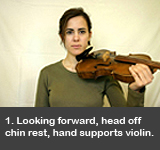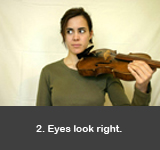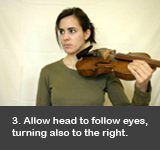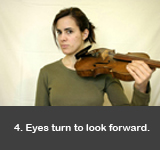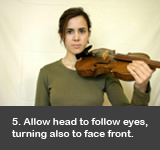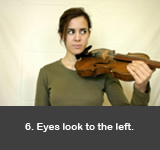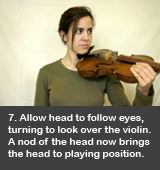Learning to turn and nod the head easily:
If your head is free to turn and nod at the top of the spine, then your whole spine is freer. This means that your balance improves, your back can lengthen and widen, your arms and hands can move more easily, and your legs lose their stiffness.
In order to hold the violin in place, violinists and violists often clamp down with their chin or jaw, stiffening their neck. If holding the violin or viola puts pressure on or twists the top of the spine, basic coordination and mobility suffer, which affect the technique. Many players keep their stiff necks even when they are not playing, and need to re-learn where the top of the spine is and how it moves. After learning how your neck moves when it is free, it becomes possible to maintain that freedom even when the head is still.
Locating the top of your spine
The top of the spine is higher and more forward than most people imagine. This is where your head balances and nods on the spine. In almost the same place, but a bit lower is the second vertebrae, that allows you to turn the head. By turning, then nodding the head, you can keep the proper balance of the head on the spine and still help stabilize the instrument when you need to.
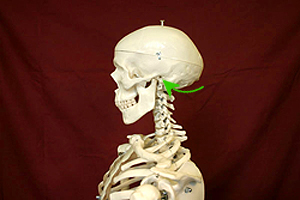
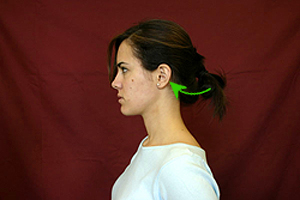
If you canít find your chin rest by simply turning and nodding your head, then there is nothing wrong with you, but your chin rest, and perhaps your shoulder rest, may need adjusting to fit you better.
Our musicians incorporated the following movements into their practicing routine, allowing them to become aware of and prevent neck tension that was interfering with their playing.
Nodding your head
To find the top of your spine, place your fingers under your earlobes and point in. You can then nod your head from here, using your fingers to point to the axis around which you nod. After you turn your head (below), you can then nod it from here to find the chin rest.
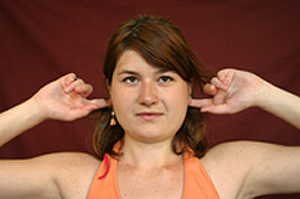
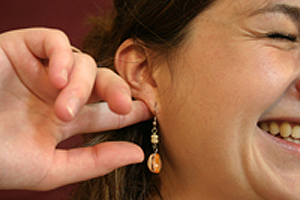
Turning your head
Now learn to turn your head at the top of your spine, using your eyes to direct and precede the movements of your head. First do the movements without the violin. Notice that the eyes move first and then the head. The head should feel almost weightless as it turns.
Now try the same eye movements with the violin resting on your collar bone. Your head may not want to turn as easily if your habit is to stiffen or contract your neck while playing. Often, violinist and violists look down and shorten their neck when they look to the left, especially if their chin rests have not been adjusted properly.* See if you can turn your head to the right and to the left in the same way, without dropping your eyes when you turn to look.
This exercise can help you to find out how you are stiffening, and to let it go with the help of your eyes.
*Trouble turning the head to the right can mean that the shoulder rest is too high, causing the instrument to push up against the chin and tilt the head to the right.
Turning head with the violin resting on the collar bone:
